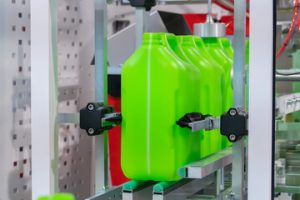Renting porta potties might not be the most glamorous topic, but it’s a necessity for many events and construction projects. In this article, we’ll explore the basics of potty rental to help you make the best choice for your event.

A reputable portable toilet rental service will offer a variety of services, including cleaning and disinfecting. This will ensure that the units are sanitary and provide guests with a clean, comfortable experience. Contact Reliable Port A Potty for expert guidance.
There are a variety of costs associated with potty rental, and it’s important to know what you’re getting into before making a decision. This way, you can avoid surprises and find a portable toilet that fits your budget. Costs vary depending on the location, duration of the rental period, and the type of porta potty you need. For example, a basic model is the most affordable option, while deluxe models offer added comfort for more expensive events.
Aside from the rental price, other charges may apply, such as delivery and disposal fees. These expenses can add up quickly, so it’s important to ask for a breakdown of the total bill when you request a quote. Some rental companies also offer package deals that include multiple types of porta potties and regular servicing for a discounted rate.
The duration of the rental period affects cost, with a one-day event requiring fewer units than a construction project. The number of toilets you need can also influence the price, but it’s usually better to overestimate than underestimate. This will help ensure that you have enough toilets for everyone attending the event or working on the construction site.
In addition to the porta potty rental cost, you’ll also need to pay for waste management. When your rental is picked up, the company will empty the waste tanks and transport it to a local landfill or wastewater treatment plant for disposal. These fees are included in the rental price and will vary from one location to another.
The cost of a standard porta potty starts at around $100 per month and includes weekly cleaning. However, some rental companies charge more for a higher-end unit, such as a deluxe or handicap-on-hand model. These models are equipped with flushing toilets and hand sanitizer to provide a more luxurious experience. They are suitable for high-profile events, such as weddings and concerts.
Type of event
Providing portable toilets for your guests at an outdoor event can prevent them from having to leave the party to find a bathroom. Besides, it will ensure that your guests are comfortable and happy throughout the event. It is also important to choose a reputable porta potty rental service. This way, you can be sure that the units you rent are clean and free from odors. Moreover, they will be delivered and removed promptly to avoid any inconveniences for your guests.
To choose the right type of porta potty, you must first assess your needs. Consider the number of people who will attend your event, and determine the size of the venue. This will help you determine how many porta potties to rent. In addition, you should think about the length of time that you will need them. A short-term event may require less porta potties than a long-term construction project.
Standard special event porta potties are usually made of plastic and can hold up to 320 pounds. They are ideal for events with large crowds, and are easy to clean and sanitize. You can also purchase a premium event unit, which is more spacious and has a flushing toilet. It is an excellent choice for weddings, concerts, and festivals.
If you are hosting a high-profile event, consider renting luxury porta potties in Long Island. These are more expensive but provide a superior restroom experience for your guests. They are meticulously maintained and prioritize cleanliness and comfort. In addition, these units are free from concrete and graffiti. Moreover, they are often placed in a VIP section to provide guests with an exceptional experience.
A good rule of thumb is to rent one porta potty per 50 attendees for a four-hour period. It is important to place the portable toilets strategically to control traffic flow. You should also place them in areas with ample ventilation. For instance, you should place them near entrances and exits, food/beverage courts, and main attractions.
In some cases, you may be required to obtain a permit for a porta potty rental in Bronx. If you are unsure, it is best to consult the local city or township. This will ensure that you don’t violate any regulations and keep your guests safe. In addition, it will protect you from possible fines and penalties.
Deluxe porta potties
If you’re planning a special event that requires classier accommodations than standard porta potties, consider renting deluxe portable toilets in North Hempstead. These units are more spacious and comfortable than regular portable restrooms, with features like urinals, hand sanitizer dispensers, and running water. They also offer a sleeker appearance, making them ideal for upscale events, galas, concerts, and other high-profile gatherings.
These luxury portable toilets are available in a variety of sizes and styles, from single-stall trailers to dual-stall units. Some models are even ADA-compliant and feature ramps for accessibility. Others are self-contained, meaning they don’t require plumbing hookups or a power source, making them perfect for events in remote areas.
The price of a luxury porta potty depends on the size and amenities, with options like sanitizer dispensers and running water costing more than others. However, some rentals can be rented at weekly rates for as low as $290 to $300, which is more affordable than other options. In addition, some luxury porta potties are equipped with mirrors for a more private experience.
Compared to standard portable toilets, deluxe toilets have a more elegant appearance and can be customized to match the theme of an event. They also offer additional comforts, such as recessed lighting, clean countertops, trash receptacles, and running water. They are more hygienic and convenient than traditional portable restrooms, making them ideal for weddings, corporate events, or long-term construction projects.
When deciding between a standard and deluxe toilet, it’s important to think about the type of event you’re hosting and who will be using it. A deluxe toilet is more expensive, but it’s worth the extra money if you want to make your guests feel special.
A deluxe toilet is also more spacious than a standard one, which makes it ideal for larger events. It also has a better odor control system and wider doors to accommodate guests with disabilities. Plus, it’s easy to add additional stalls to accommodate more people.








